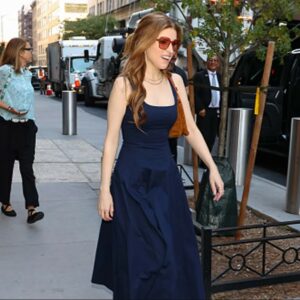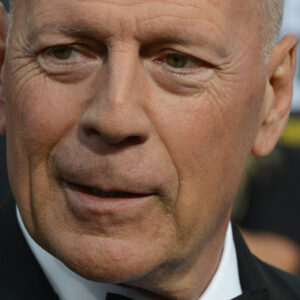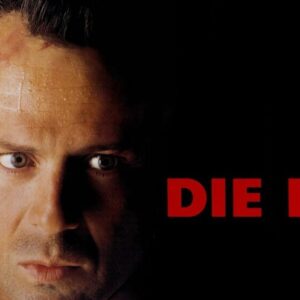In the pantheon of modern pop icons, few artists have had as profound an impact on the evolution of music video aesthetics as Lady Gaga. From her debut, she not only captivated audiences with her musical prowess but also redefined what it means to use visual mediums as platforms for bold artistic expression. Her music videos became more than promotional tools—they were artistic statements that blurred the boundaries between fashion, performance, film, and music.
Much like Madonna before her, Lady Gaga understood the power of visual storytelling, and she used it to create an ongoing dialogue about identity, gender, fame, and society’s expectations. Her videos are more than just a collection of eye-catching imagery; they are cultural artifacts that resonate with themes of non-conformity and personal freedom. To unpack the influence Gaga has had on the visual landscape of pop music, it’s essential to explore her avant-garde style, her boundary-pushing representations of identity, and the collaborations that have allowed her to merge high fashion with cinematic storytelling.
1. Avant-Garde Visual Style: Merging Art and Pop
Lady Gaga’s introduction into the music world felt like a cultural earthquake. Songs like “Just Dance” and “Poker Face” were infectious hits, but it was the accompanying visuals that signaled the arrival of a pop artist unlike any other. From the start, Gaga distanced herself from the conventions of mainstream pop through a hyper-stylized, avant-garde aesthetic that would become her signature.
Take the video for “Bad Romance,” one of her most iconic works. The video is a masterclass in blending high fashion with disturbing, surreal imagery. Directed by Francis Lawrence, it showcases Lady Gaga not as a mere performer but as a vessel for artistic expression. She dons otherworldly couture from Alexander McQueen, navigating a dystopian narrative that explores themes of control, fame, and obsession. The video’s striking use of white, skeletal costumes juxtaposed against fiery backdrops creates a visual language that is both alluring and grotesque. “Bad Romance” is not just a music video—it is a piece of high art.
Similarly, “Telephone,” her collaboration with Beyoncé, elevates the typical pop duet to a cinematic experience. Directed by Jonas Åkerlund, the video blends elements of ‘70s grindhouse cinema with modern-day camp. From its fashion-forward costumes (a mix of custom-made pieces and haute couture) to its chaotic energy, “Telephone” exemplifies how Gaga rejects simplicity in favor of excess, pushing her videos to the boundaries of music video norms. The video feels like a short film—one part Quentin Tarantino, one part Warholian critique of fame and consumer culture.
2. Pushing Boundaries of Identity and Gender: Redefining Norms
Central to Lady Gaga’s artistic ethos is her commitment to challenging societal norms around identity, gender, and self-expression. In a pop landscape often defined by its adherence to conventional standards of beauty and femininity, Gaga stands out as a provocateur who uses her platform to encourage radical self-acceptance.
Her 2011 hit “Born This Way” is a celebration of individuality and queerness. The video, directed by Nick Knight, begins with a manifesto proclaiming the birth of a new race—one that is free from prejudice. This narrative of rebirth is mirrored in the video’s visuals, where Gaga appears as a divine figure, her face grotesquely transformed by prosthetics. In the world of “Born This Way,” traditional beauty is deconstructed, with Gaga embracing the monstrous and the alien as part of her celebration of difference.
The video also serves as a powerful commentary on gender identity. Gaga’s androgynous looks and her flirtations with non-binary fashion challenge the gender binary, a recurring theme in her body of work. In her video for “Yoü and I,” Gaga alternates between various personas, including her drag king alter-ego Jo Calderone. Her refusal to adhere to a single, fixed identity allows her to transcend the confines of both gender and genre, further cementing her role as a champion for the LGBTQ+ community.
Gaga’s music videos are not merely about self-expression—they are about the larger, more urgent issue of societal acceptance. By placing themes of gender fluidity and identity front and center, Gaga opens up new conversations about what it means to be authentically oneself, free from the expectations of a rigid society.
3. Collaborations with Fashion and Film: Bridging Artistic Worlds
A key element of Lady Gaga’s visual success has been her ability to bridge the worlds of fashion and film, collaborating with some of the most influential designers and directors of her time. These partnerships have elevated her music videos from mere promotional vehicles to full-fledged artistic endeavors.
Her ongoing collaboration with fashion designer Alexander McQueen, for example, gave birth to some of her most iconic looks, particularly in the video for “Bad Romance.” McQueen’s designs—often dark, gothic, and avant-garde—were the perfect visual complement to Gaga’s own bold, theatrical style. Similarly, her collaboration with director Jonas Åkerlund, known for his high-octane, often surreal filmography, has resulted in some of her most memorable videos, including “Paparazzi” and “Telephone.”
These collaborations are not one-off partnerships; they are symbiotic relationships where fashion, music, and cinema collide. Gaga herself has referred to her music videos as “pop performance art,” a term that reflects her belief in the power of multimedia collaboration. In working with visionary directors and designers, Gaga’s videos become more than a sum of their parts; they are interdisciplinary works that exist at the intersection of various art forms.
4. Cinematic Storytelling and Symbolism: Complex Narratives in Pop
Gaga’s music videos stand out not just for their stunning visuals, but also for their intricate storytelling. More than just a series of disjointed scenes, her videos weave together complex narratives filled with symbolism, inviting viewers to decode their many layers of meaning.
In “Paparazzi,” for example, Gaga plays a fallen starlet who is both victim and perpetrator of the media’s obsession with fame. The video depicts her being nearly killed by a lover, only to rise from the dead, draped in couture, seeking revenge. The narrative speaks to the predatory nature of fame, where the line between victim and perpetrator is often blurred. Fame is not glamorous in Gaga’s world; it is toxic, deadly, and consuming.
The use of symbolism is similarly central to “Alejandro,” where Gaga draws on religious iconography to create a narrative about repression and desire. In the video, she appears as a militaristic figure, commanding an army of faceless men while dressed in a latex nun’s habit. The conflation of religious and sexual imagery is provocative, raising questions about the boundaries of faith, power, and submission. Gaga is no stranger to controversy, and in “Alejandro,” she uses that controversy to challenge viewers’ preconceived notions about religion, authority, and sexuality.
5. Cultural and Artistic Influence: Inspiring a New Generation
Lady Gaga’s influence on the music industry is indisputable, but her impact extends far beyond the world of music. Her bold, avant-garde approach to visual storytelling has inspired countless artists across various disciplines. Today, it’s not uncommon to see elements of Gaga’s aesthetic in the work of other pop stars, from Billie Eilish’s dark, surreal visuals to Doja Cat’s bold experimentation with fashion and identity.
Gaga has also influenced a generation of filmmakers, designers, and visual artists. Her videos are frequently studied in art schools and film programs for their innovative approach to storytelling and symbolism. By pushing the boundaries of what a music video can be, she has expanded the medium’s potential, transforming it into a legitimate form of artistic expression.
6. A Legacy of Visual Innovation: Redefining the Music Video
At its core, Lady Gaga’s body of work represents a complete redefinition of the music video as a medium. No longer just a marketing tool, the music video, in Gaga’s hands, becomes a platform for high art, performance, and cultural commentary. Her fearless exploration of identity, her willingness to embrace the grotesque, and her commitment to pushing the boundaries of gender and beauty have set a new standard for pop artists.
Gaga’s music videos are not just part of her brand—they are essential to her artistic legacy. They have raised the bar for what a pop music video can achieve and have opened the door for future artists to approach their visuals with the same level of creativity and ambition. Whether through her collaborations with fashion giants or her complex, symbol-laden narratives, Gaga’s influence on the visual culture of the 21st century is undeniable.
As pop music continues to evolve, Lady Gaga’s impact on music video aesthetics will remain one of her most enduring legacies. By merging fashion, film, and avant-garde art, she has created a visual revolution that transcends the traditional boundaries of the genre, leaving an indelible mark on the future of pop culture.





